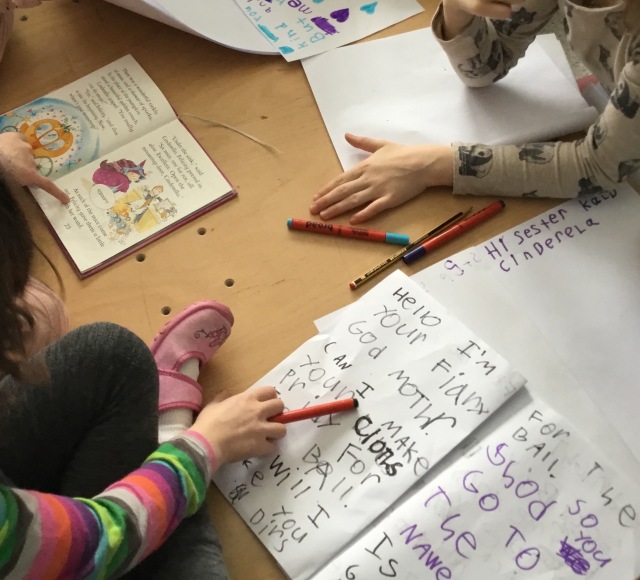Children learn language through active participation in social contexts. As Halliday (1980), states: “A child has to construct language, but he does not do this alone – he does it in interaction with others; and the others are not simply providing a model – they are actively engaged int he construction process along with him.”
Constructing an Understanding of Writing a Play Script within a Social Context
The addition of a stage to the classroom environment, provoked an engagement with writing a play script in order to act out a well known fairy tale. Kalea led the action and together with Sydney, Jordan and Masha, divided the task of writing what their agreed upon character might say. As they worked on this together, they were constructing language connected to dramatisation.
The Language of Negotiation
As the girls attempted to read the play in sequence, the language of negotiation was socially constructed:
A: I am not going to change my part
B: We could use this (part) at the back of the story, you could say something different (she refers to the book of Cinderella to support her idea of the story sequence)
A: No, I know what to do
B: This is a big problem. I know, we could just change the story so S comes in earlier.
A: (with enthusiasm) Yes, we could change it not only a little but a lot!
